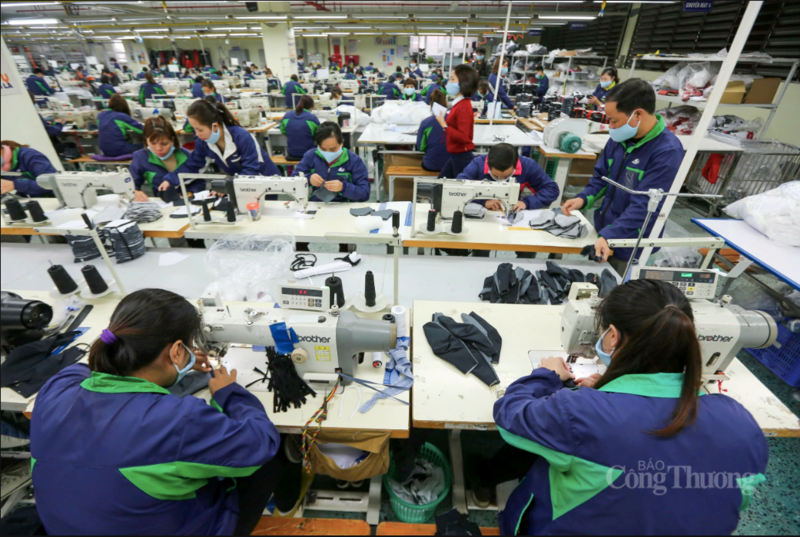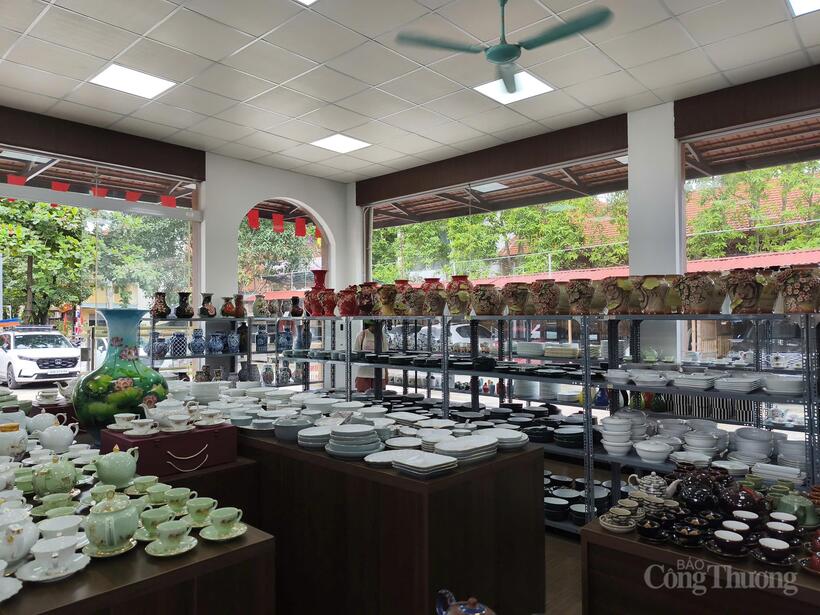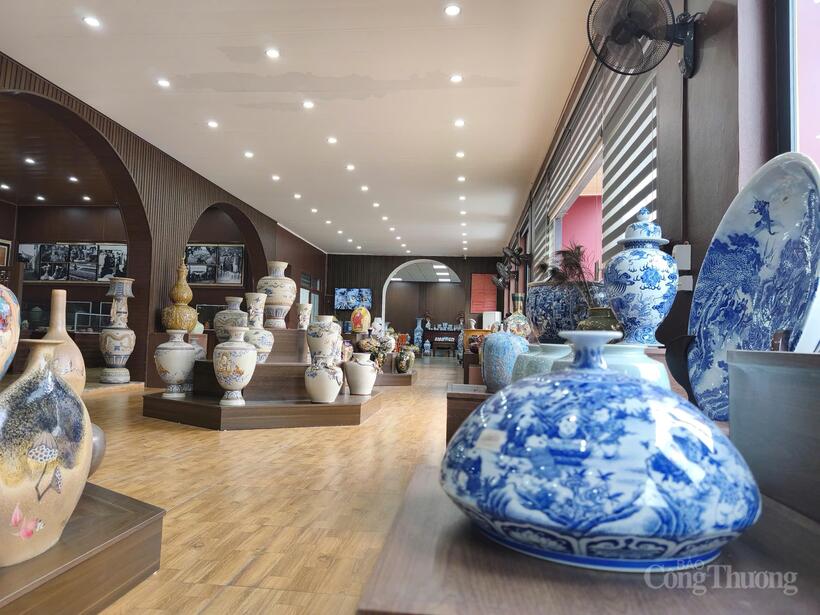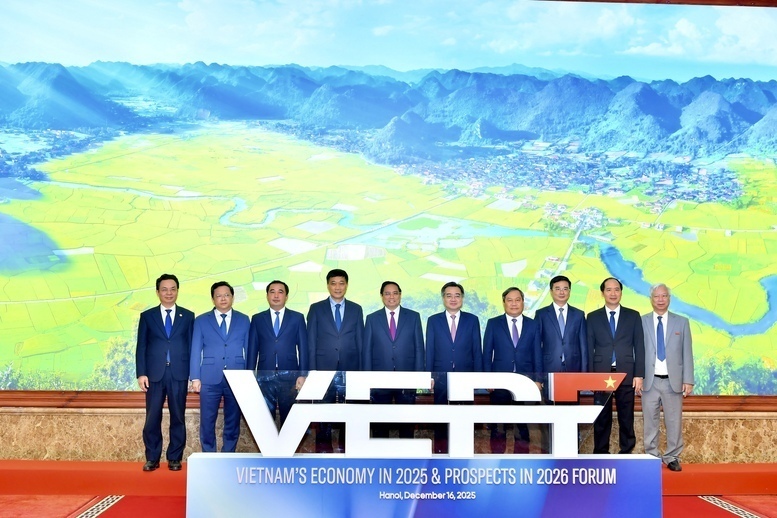
When sustainability is no longer optional for Vietnam’s textile firms
19:05 | 23/03/2025 11:18 | 17/12/2025Trade
A busy season for exports
Speaking with reporters from the Industry and Trade Newspaper, Doan Lam Quang Anh, a staff member at the National Center for Creative Design and Ceramic Preservation in Bat Trang, Hanoi’s famed pottery village, said the center had recently exported a batch of ceramic bowls and plates worth several tens of millions of dong to a restaurant in Japan.
According to Anh, the order came directly from Japanese tourists who had visited Bat Trang, toured the center, and decided to place an export order after selecting the products themselves.
He added that Bat Trang has recently seen a sharp increase in visitors, including many foreign tourists from Japan, the Republic of Korea, and Europe. They are particularly drawn to Vietnamese ceramics for their high level of craftsmanship and distinctive cultural expression.

Vietnamese handicrafts have been exported to more than 160 countries and territories worldwide.
Beyond purchasing souvenirs, some tourists have also placed small export orders. Although the value of such orders may be modest, they serve as an effective way to promote the image of Bat Trang in particular and Vietnam in general to the world.
Similarly, Nguyen Van Tam, owner of a handicraft workshop in Chuyen My commune, Hanoi, shared that export orders to Europe and the United States are surging toward the end of the year, forcing artisans to work around the clock to meet delivery deadlines.
According to the Hanoi Department of Industry and Trade, Vietnam’s handicraft exports are currently valued at around USD 3.5 billion per year, with an annual growth rate of about 10%. Vietnamese handicraft products are now available in 163 countries and territories, including ceramics, bronze ware, wooden and oil paintings, glassware, gemstone products, carpets, lanterns, hats, handbags, and handmade footwear.
For bamboo and rattan products alone, the EU accounts for 31% of exports, the US 20%, and Japan 9%. However, Vietnamese handicrafts still face intense competition from other countries, particularly China.
Although export orders from major markets such as the US, EU, and Japan have declined sharply, shipments to emerging markets like Thailand, the Philippines, and Indonesia have increased by nearly 15%. This trend presents Vietnam with significant opportunities to tap into new markets, gain new sources of income, and share its environmental and cultural values with global consumers.
Raising quality to compete globally
Vietnam’s handicraft industry is thus standing at an important crossroads. Opportunities are abundant, but challenges persist, especially in ensuring consistent quality and scaling production to meet international standards.
In reality, most of Vietnam’s handicraft and rural industrial products remain small in scale, lacking uniformity and stability in quality. Many workshops still rely heavily on manual labor and have yet to invest sufficiently in technology, packaging, design, technical standards, or certificates of origin.
Some products, though highly artistic, fail to meet safety or environmental requirements, or lack the modern design appeal suited to international tastes. Furthermore, weak linkages between production facilities and exporters have prevented the establishment of value chains, resulting in low added value.
Experts suggest that for Vietnam’s handicrafts to compete effectively on the global market, the country needs a comprehensive quality-upgrading strategy covering design, production, packaging, promotion, and brand development. The adoption of modern technologies in material processing, drying, printing, and dyeing will help ensure product consistency, reduce costs, and support environmental sustainability.

Exports of Vietnamese handicrafts have been growing by about 10% annually.
At the same time, participation in international trade promotion programs, specialized exhibitions, and cross-border e-commerce platforms such as Alibaba and Amazon Global will enable Vietnamese rural enterprises to connect more easily with global buyers.
In recent years, under the National Industrial Promotion Program, the government has supported thousands of rural businesses in upgrading machinery, training artisans, and developing technical demonstration models. However, to achieve greater effectiveness, local authorities are encouraged to focus their assistance on key projects with high export potential and economic value.
Building regional brands and distinctive product identities is equally important in shaping Vietnam’s position in global markets. When international consumers think of ceramics and immediately recall Bat Trang, or think of silk and associate it with Van Phuc, that is the hallmark of success - a sign that quality and reputation have been elevated together.
Yet upgrading is not only about technology or production; it is also about a shift in mindset. Artisans need to move from producing out of habit to producing for the market, aligning their work with the preferences of global consumers. This transformation in business thinking is essential for Vietnam’s rural industrial products to expand sustainably into international markets.
Another crucial factor is developing stable raw material centers that ensure traceability and quality. Recently, the Hanoi Department of Industry and Trade, in collaboration with northern provinces, organized a Supply - Demand Connectivity Conference for the handicraft sector, aimed at helping enterprises secure long-term partnerships for sourcing raw materials and semi-finished goods.
The conference not only helps businesses reduce dependence on imported materials but also fosters regional linkages, supports sustainable production, and creates more jobs for rural workers.
Ultimately, upgrading production processes must go hand in hand with upgrading business thinking. When artisans truly understand what global customers value, their products will not only travel farther, they will endure longer in the global marketplace.
Enhancing quality while aligning with international standards is the path Vietnam’s rural industries must pursue to position their handicrafts competitively on the global stage.

19:05 | 23/03/2025 11:18 | 17/12/2025Trade

19:05 | 23/03/2025 11:17 | 17/12/2025Trade

19:05 | 23/03/2025 09:50 | 17/12/2025Trade

19:05 | 23/03/2025 20:46 | 16/12/2025Industry

19:05 | 23/03/2025 20:41 | 16/12/2025News and Events